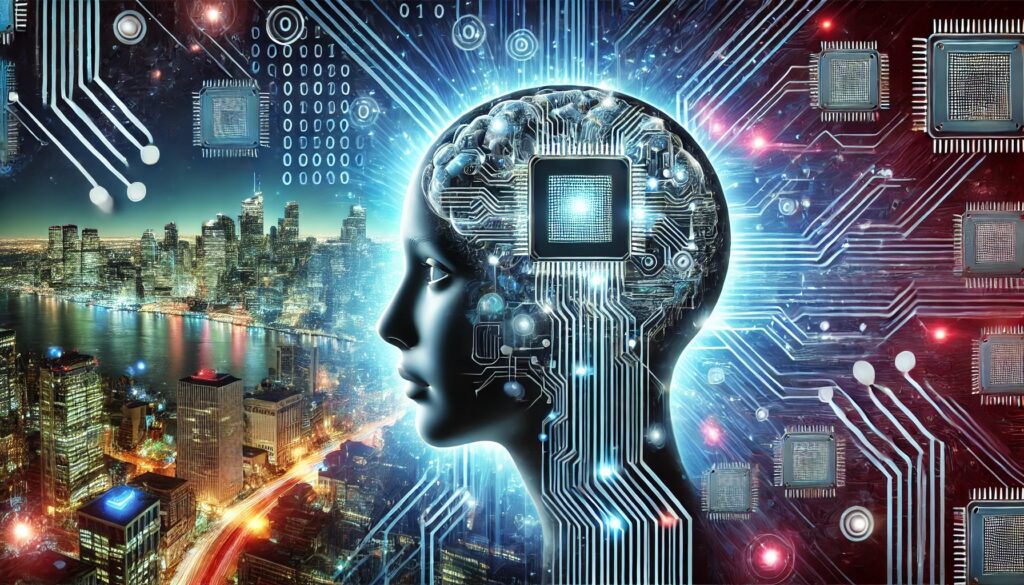
Revolutionizing AI: The Rise of Deep Learning Chips
Silicon Brains: Unleashing the Power of Deep Learning Chips
In the realm of artificial intelligence (AI), the advancements in deep learning chips are nothing short of revolutionary. These specialized hardware components are designed to accelerate the computational processes essential for machine learning models. Let’s delve into how these chips are transforming the AI landscape.
What Are Deep Learning Chips?
Deep learning chips are specialized processors tailored for the heavy computational demands of deep neural networks. Unlike traditional CPUs, these chips handle massive data sets and complex calculations with greater efficiency. Their architecture is optimized for parallel processing, a crucial feature for AI applications.
NVIDIA’s Dominance in AI Hardware
When it comes to deep learning hardware, NVIDIA stands out. Their GPUs, particularly the RTX 4090, are leading the charge with exceptional performance and efficiency. The RTX 4090 boasts 24GB of GDDR6X VRAM and numerous CUDA cores, making it a top choice for AI researchers. Additionally, NVIDIA’s continuous improvements in architectural efficiency have kept them ahead of the competition.
Innovative Designs: Beyond Traditional Transistors
Researchers at Princeton University have developed a new type of AI chip that moves beyond traditional transistor-based designs. This chip, supported by DARPA funding, aims to enhance energy efficiency and scalability. Such innovations are critical as AI systems increasingly integrate into mobile devices and IoT applications.
Tailoring Chips for AI Tasks
Bill Dally, a prominent computer scientist at NVIDIA, highlights how tailoring hardware for specific AI tasks can yield significant performance gains. Techniques like structural sparsity and simplified numeric approaches (such as four-bit arithmetic) are being explored to optimize AI inference. This focus on specialized hardware is driving remarkable advances in AI capabilities.
The Competitive Landscape: GPUs vs. TPUs
While Google’s TPUs (Tensor Processing Units) have made strides, NVIDIA’s continuous architectural improvements keep their GPUs at the forefront. Over the past few generations, NVIDIA has significantly enhanced the efficiency of their chips, maintaining a competitive edge. The architectural efficiency of NVIDIA GPUs has improved roughly tenfold, a testament to their innovation and dominance in the field.
The Future of AI Hardware
The future of AI hardware looks promising with ongoing advancements in chip design. Innovations like compute-in-memory architectures and neuromorphic chips could further revolutionize the field. These technologies promise to address current limitations in power consumption and data processing speeds.
Practical Applications
The real-world applications of these advanced chips are vast. From self-driving cars and healthcare diagnostics to natural language processing and robotics, the enhanced capabilities of deep learning chips are enabling breakthroughs across various sectors. These chips are critical in processing the vast amounts of data required for these advanced AI applications.
Deep Learning Chips for Edge Computing
A significant trend in AI is the move towards edge computing, where data processing occurs closer to the data source. Deep learning chips are becoming essential for this shift, providing the necessary computational power in compact and energy-efficient formats. This allows AI to be deployed in real-time applications like autonomous drones, smart cameras, and wearable devices.
Environmental Impact and Sustainability
Another crucial aspect of modern deep learning chips is their potential for reducing the environmental impact of AI technologies. By improving energy efficiency, these chips help lower the carbon footprint of data centers and AI applications. This is vital as the demand for AI services continues to grow, emphasizing the need for sustainable technological advancements.

AI in 2024: Game-Changing Trends You Need to Know
AI Revolution in Creative Industries
Generative AI is transforming creative industries. Video models like those from Runway produce high-quality clips that rival professional studios. This technology is revolutionizing special effects and localization tasks in film production. By reducing costs and time, AI empowers artists and filmmakers to explore new creative frontiers (MIT Technology Review) (IBM – United States).
Rise of Multimodal AI
Multimodal AI integrates text, images, and audio, enhancing applications like Microsoft Copilot. This enables more human-like interactions, improving user experiences across various platforms. Imagine an AI that understands your spoken requests while analyzing visual data to provide accurate responses. This is the future of user interaction (Source).
Small Language Models Making Big Waves
Small language models (SLMs) are becoming more efficient and accessible. Unlike their larger counterparts, SLMs can run on less powerful hardware without compromising performance. This makes AI technology more affordable and widely available, breaking down barriers to entry for many organizations and individuals (Source).
AI Tackling Global Challenges
AI is playing a crucial role in addressing global issues. From climate change to healthcare, AI tools are making significant strides. For example, AI-driven models are improving weather predictions and aiding in sustainable agriculture. In healthcare, AI is accelerating cancer research and the development of new drugs, potentially saving countless lives (IBM – United States) (Source).
Emphasis on AI Ethics and Safety
As AI becomes more pervasive, the focus on ethics and safety intensifies. Organizations are collaborating to create standards that ensure responsible AI use. This includes developing robust safety protocols and promoting transparency, which are essential for maintaining public trust and preventing misuse (IBM – United States).
API-Driven AI: Boosting Productivity
The proliferation of APIs is simplifying the creation of AI-driven applications. This trend is particularly evident in retail, where AI enhances customer service and inventory management. By integrating AI through APIs, businesses can quickly adapt to market changes and improve their operational efficiency (IBM – United States).
Generative AI in Media and Marketing
Generative AI is revolutionizing media and marketing. AI tools can create realistic deepfake avatars for marketing and training, reducing the need for extensive human input. This technology, while raising ethical concerns, streamlines content creation processes and opens new avenues for engagement (MIT Technology Review) (MIT Sloan Review).
The Road Ahead
As we look to the future, the development of deep learning chips will undoubtedly continue to accelerate. With ongoing research and innovation, we can expect even more powerful, efficient, and versatile AI hardware. This progress will not only drive the next wave of AI advancements but also open new possibilities in technology and industry.
By embracing these cutting-edge technologies, we are not just witnessing the evolution of AI but actively shaping a future where machines and humans work seamlessly together to solve some of the world’s most complex problems.